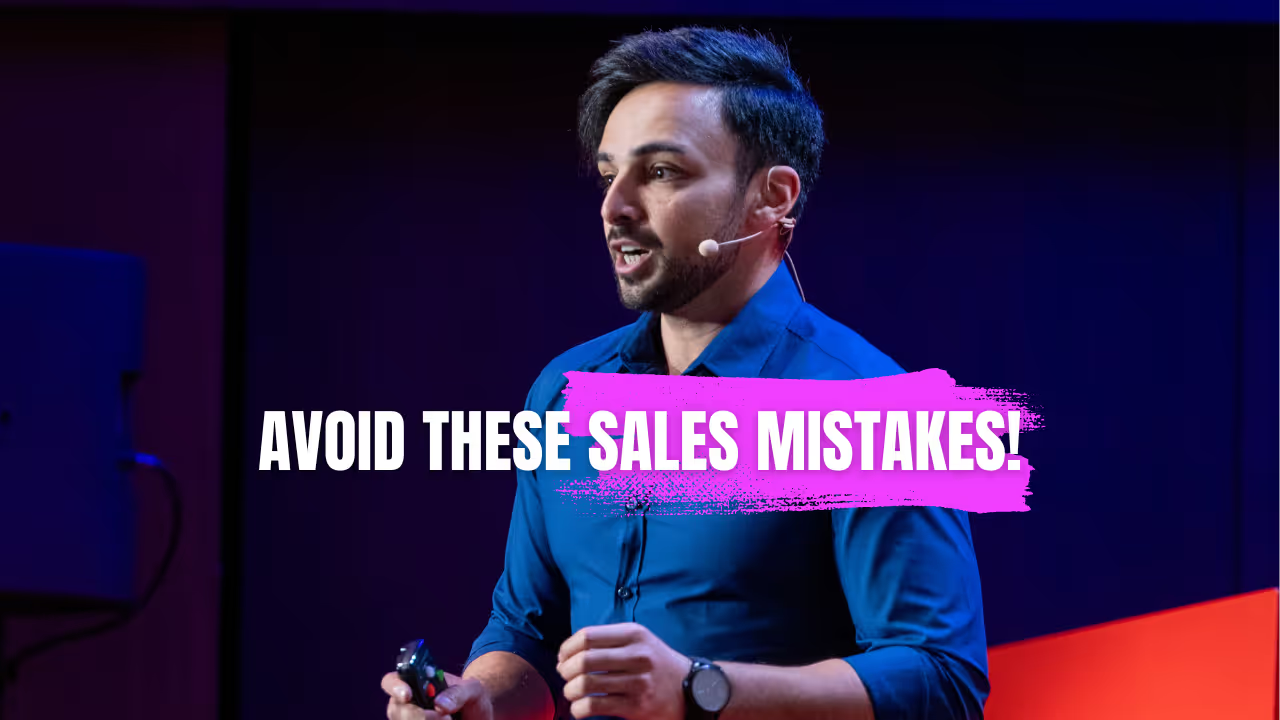5 Costly Mistakes Killing Your Deals (And How to Fix Them)

Selling should be simple: You talk to a potential client, show them how you can help, and they say yes.
But instead, you get:
- “I love this, but I need to think about it.”
- “We don’t have the budget for this right now.”
- Silence after you follow up.
At this point, you’re asking yourself:
- Why do people disappear after showing interest?
- Am I doing something wrong?
- How do I close deals without feeling like I’m chasing people?
Most of the time, you’re closer to a yes than you think.
Let’s talk about the five biggest mistakes and how to fix them.
1. Talking About Yourself Too Early

The Mistake:
You start with:
"We’re [Company Name], and we help businesses do X, Y, and Z."
Sounds fine, right? But here’s the problem—they don’t care. At least, not yet.
Why It Kills Deals:
People buy things because they have a problem they need solved—not because your company sounds impressive.
If you start talking about yourself before they even say a word, they zone out and stop listening.
The Fix:
Focus on them.
Instead of introducing yourself, try asking a question:
"I saw your company is hiring more sales reps. How’s that going? Any challenges with onboarding?"
This works because:
- It grabs their attention.
- It makes them feel heard.
- It gets them talking about their problem.
The more they talk, the more likely they are to buy.
2. Avoiding Budget Talks

The Mistake:
You explain everything about your offer, assuming if they love it, they’ll figure out the money part later.
Then, at the very end, they say:
"This sounds great, but we can’t afford it right now."
Why It Kills Deals:
You just spent an hour explaining something they were never going to buy.
The Fix:
Talk about money early.
Ask simple questions like:
- “What’s your budget for solving this problem?”
- “If this gets you the results you want, would $X/month work for you?”
This saves you from chasing people who were never serious.
3. Ignoring Decision Makers

The Mistake:
You have a great call, they love your offer, and they say:
"I just need to check with my boss and I’ll get back to you."
Then... they never do.
Why It Kills Deals:
You just spent all your time convincing someone who doesn’t even have the power to say yes.
The Fix:
Before diving into details, find out who actually makes the decision.
Ask early:
- “Who else needs to be involved in this decision?”
- “When you’ve made similar decisions before, what was the process?”
This helps you avoid getting stuck in the ‘I’ll check with my team’ trap.
4. Overloading People with Information

The Mistake:
You’re excited about your offer, so you explain everything—all the features, case studies, stats, and tiny details.
But instead of being impressed, they look overwhelmed.
Why It Kills Deals:
When people feel like they need to process too much, they delay making a decision.
And “I need to think about it” usually means no.
The Fix:
Less is more. Instead of listing features, connect your offer to their specific pain point.
Example:
Wrong approach:
"Our tool has AI-driven automation, predictive analytics, and real-time reporting."
Better approach:
"You mentioned your team is losing leads because they’re slow to follow up. Our tool automates reminders and responses, so no lead gets forgotten."
The second one is easier to understand—which makes it easier to say yes.
5. Leaving the Close Open-Ended

The Mistake:
At the end of the conversation, you say:
"Let me know if you’d like to move forward."
It sounds polite, but it puts all the pressure on them.
Why It Kills Deals:
People are busy. If you leave the decision up to them, they get distracted and never come back.
The Fix:
Take control of the next step. Instead of waiting on them, say:
"Let’s get this started. Should we finalize the agreement now or later this afternoon?"
Why this works:
- It assumes they’re moving forward.
- It makes saying yes easy.
When you guide the next step, deals close faster.
Need Support To Improve Your Sales?
We would be happy to help you level up and get real results. Book your free 30-minute strategy session here.
.avif)
.avif)
